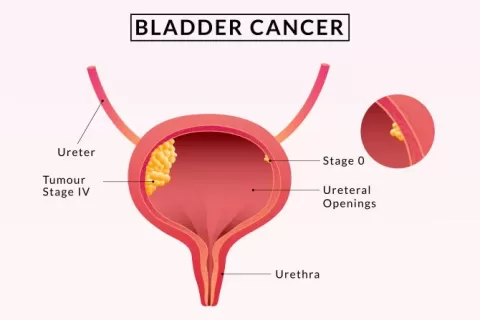Bacterial infections and COVID-19 present a complex challenge to public health, especially as the world grapples with the ongoing pandemic. While COVID-19 primarily poses a threat as a viral infection, the presence of secondary bacterial infections can significantly complicate a patient’s outcome. Coinfections, where viral and bacterial pathogens invade concurrently, often exacerbate the severity of illness, leading to increased hospitalizations and higher mortality rates. The interaction between these microbes can lead to conditions such as bacterial pneumonia, particularly in individuals suffering from respiratory diseases like influenza. Understanding the dynamics of bacterial infections and COVID-19 is essential for developing effective treatments and mitigating COVID-19 complications.
The interplay between viral pathogens and bacterial agents is a crucial area of focus in understanding respiratory diseases. COVID-19, a dominant viral illness, often prompts the rise of secondary infections, commonly referred to as bacterial coinfections. These infections not only hinder recovery but also signal the urgent need for effective management strategies. Furthermore, the increased incidence of bacterial pneumonia during viral outbreaks, particularly influenza, poses a significant threat to vulnerable populations. Recognizing these interactions is vital for healthcare professionals as they navigate the complexities of treating respiratory illnesses.
The Dangers of Bacterial Infections During COVID-19
Bacterial infections have increasingly been recognized as critical players in exacerbating the health outcomes of patients suffering from COVID-19. Research has shown that a significant number of hospitalized COVID-19 patients also present with secondary bacterial infections. These infections can complicate recovery, leading to prolonged hospital stays and higher mortality rates. This phenomenon highlights the importance of vigilant monitoring for bacterial coinfections in patients diagnosed with COVID-19.
The mechanism by which COVID-19 facilitates bacterial infections involves the disruption of the respiratory epithelium, which serves as a protective barrier against pathogenic microorganisms. When the COVID-19 virus compromises this barrier, it paves the way for opportunistic bacteria, such as Staphylococcus aureus and Streptococcus pneumoniae, to invade and cause severe illness. Consequently, addressing these bacterial infections is paramount for improving patient outcomes and managing the overall impact of the pandemic.
Frequently Asked Questions
How do bacterial infections complicate COVID-19 cases?
Bacterial infections can exacerbate COVID-19 outcomes by increasing the severity of the illness. Approximately 16% to 28% of adults hospitalized with COVID-19 also develop bacterial infections, significantly increasing their risk of longer hospital stays, the necessity for mechanical ventilation, and heightened mortality rates compared to those with only COVID-19.
What is the role of coinfections in COVID-19 and bacterial infections?
Coinfections occur when a patient has both a viral infection, such as COVID-19, and a bacterial infection simultaneously. Studies indicate that coinfections can lead to worse health outcomes, as patients with coinfections have a higher risk of complications and death.
Can influenza lead to bacterial pneumonia alongside COVID-19?
Yes, influenza viruses can trigger bacterial pneumonia, especially during the flu season when COVID-19 is also prevalent. The damage caused by influenza can make individuals more susceptible to bacterial infections like Streptococcus pneumoniae, enhancing the risks associated with both viruses.
What are common bacteria involved in secondary infections during COVID-19?
Bacteria such as Streptococcus pneumoniae and Staphylococcus aureus commonly cause secondary infections in patients suffering from COVID-19. These bacteria normally cohabit the respiratory tract but can lead to severe complications when the immune system is weakened.
Why are patients with COVID-19 more likely to experience bacterial infections?
COVID-19 can disrupt the protective barriers in the respiratory tract, making it easier for bacteria to invade. The immune response to the virus can also diminish the ability to fight off subsequent bacterial infections, leading to severe outcomes.
How do COVID-19 complications relate to bacterial infections?
COVID-19 complications often arise not only from the viral infection itself but also from secondary bacterial infections. These can lead to severe pneumonia and increase the risk of death, as evident in many hospitalized patients experiencing both types of infections.
What is the significance of understanding bacterial infections in the context of COVID-19?
Understanding bacterial infections in COVID-19 is crucial for effective treatment, as secondary infections can significantly contribute to mortality. Identifying and managing these coinfections can improve patient care and outcomes in individuals hospitalized with COVID-19.
What treatment approaches exist for managing bacterial infections alongside COVID-19?
Antibiotics are used to treat bacterial infections, while antiviral medications aim to fight viral infections. A comprehensive understanding of how the immune system responds to both types of pathogens is necessary for developing effective treatment strategies for patients facing coinfections.
| Key Point | Details |
|---|---|
| Coinfections vs. Secondary Infections | Coinfections occur when two or more pathogens infect at the same time, while secondary infections occur sequentially after an initial infection. |
| Historical Context | Most deaths during the 1918 influenza pandemic were due to bacterial infections, as they often follow viral infections like flu and COVID-19. |
| Impact on COVID-19 Patients | 16% to 28% of hospitalized COVID-19 patients have secondary bacterial infections, leading to longer hospital stays and higher mortality. |
| Key Bacteria | Common bacteria involved in influenza coinfections include Streptococcus pneumoniae and Staphylococcus aureus. |
| Role of Immune Proteins | Proteins like Z-DNA binding protein (ZBP1) may play roles in regulating responses to both viral and bacterial infections. |
Summary
Bacterial infections and COVID-19 are closely linked, particularly in how viral infections pave the way for secondary bacterial complications. The interplay between these infections underlines the importance of understanding their dynamics to prevent severe outcomes. Historical precedents, such as those seen in the 1918 flu pandemic, illustrate that while viruses initiate infections, it is often the secondary bacterial infections that lead to increased mortality. Current understanding shows that addressing both viral and bacterial infections is crucial in managing healthcare, particularly during flu seasons amid ongoing COVID-19 challenges. Highlighting the need for integrated treatment approaches will be vital in effectively reducing deaths associated with these infectious diseases.
The content provided on this blog (e.g., symptom descriptions, health tips, or general advice) is for informational purposes only and is not a substitute for professional medical advice, diagnosis, or treatment. Always seek the guidance of your physician or other qualified healthcare provider with any questions you may have regarding a medical condition. Never disregard professional medical advice or delay seeking it because of something you have read on this website. If you believe you may have a medical emergency, call your doctor or emergency services immediately. Reliance on any information provided by this blog is solely at your own risk.








